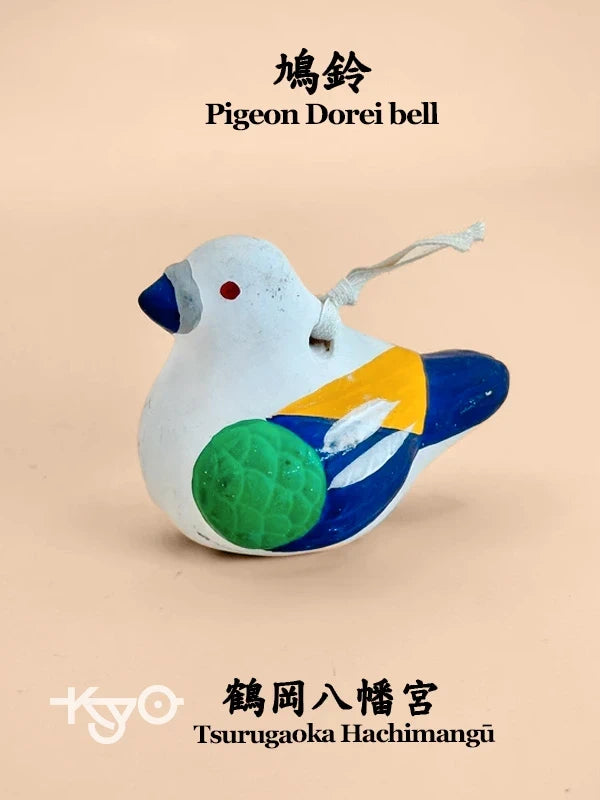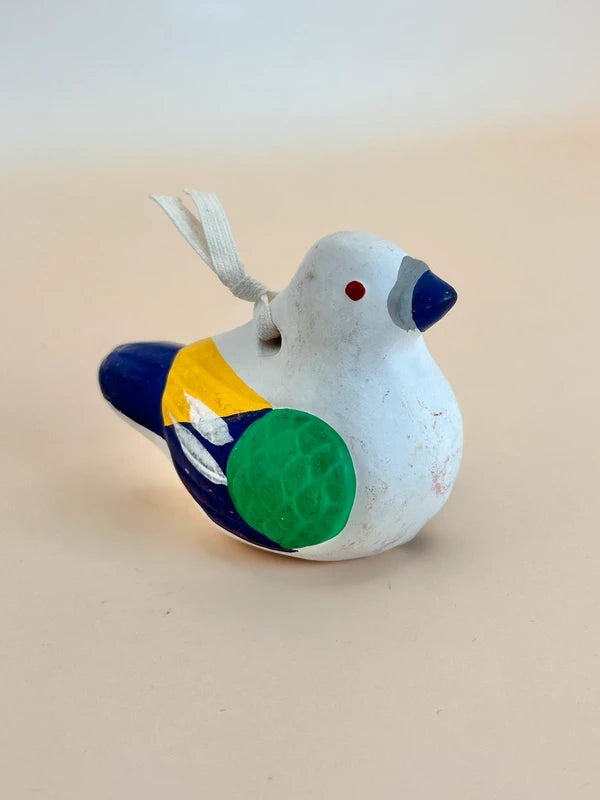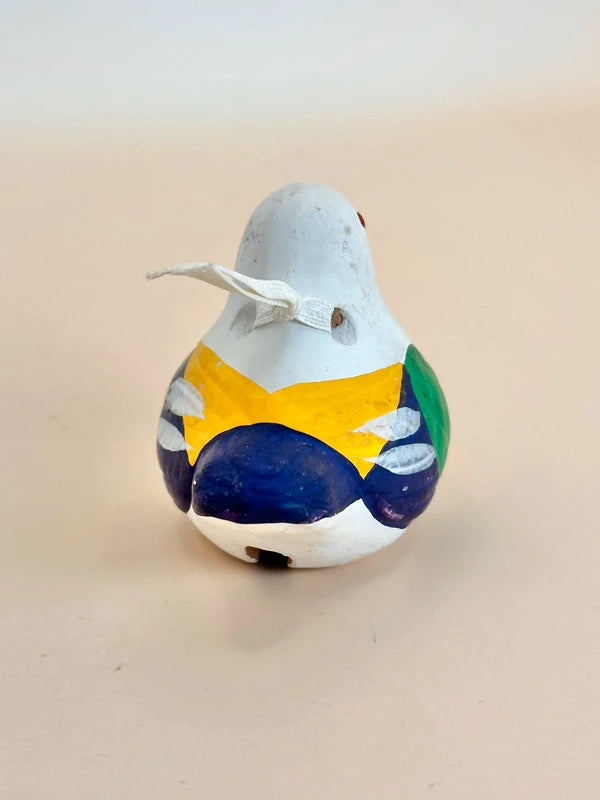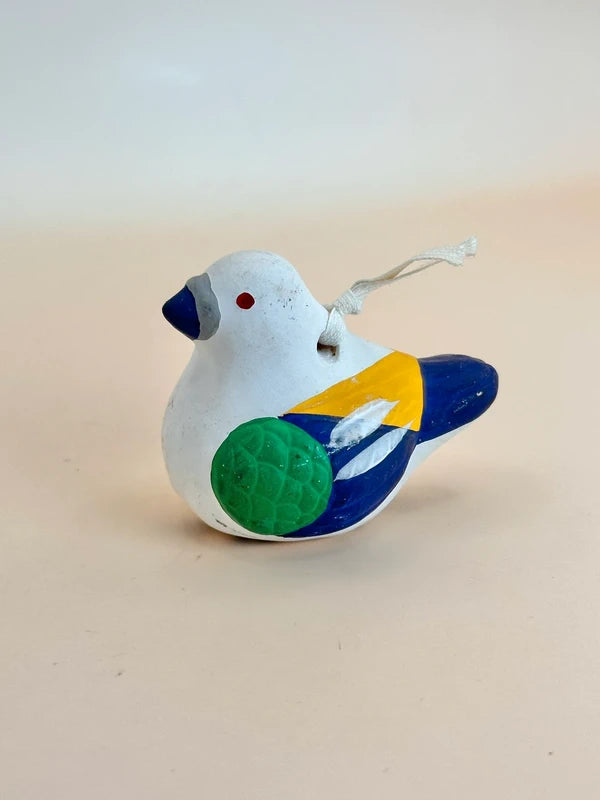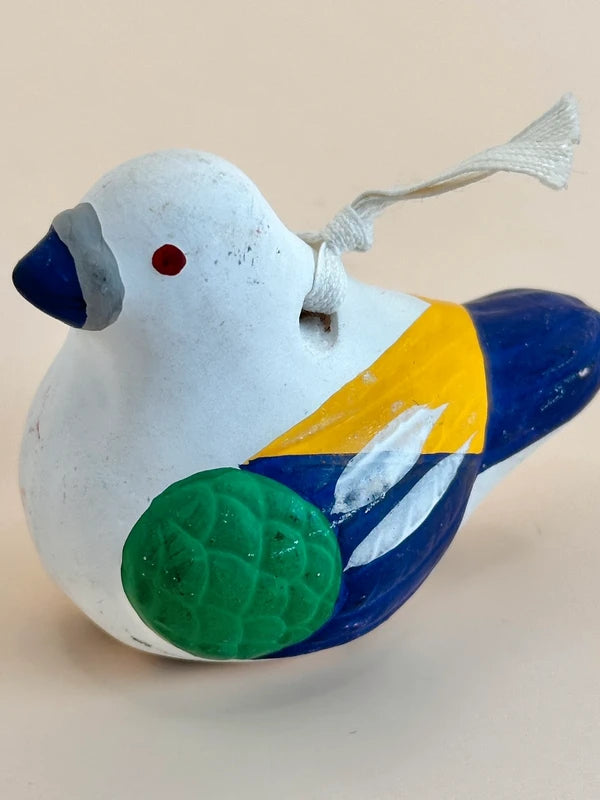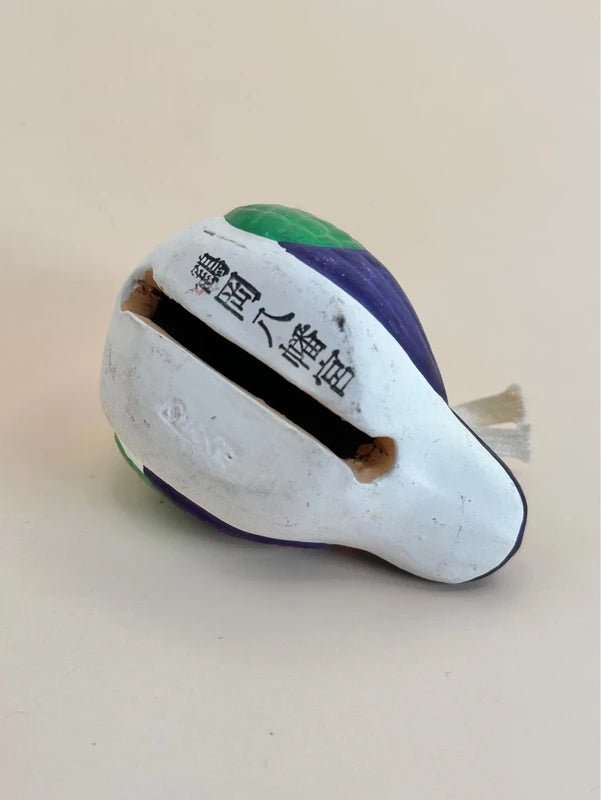CB066 - Pigeon Dorei Bell︱Tsurugaoka Hachimangū 鶴岡八幡宮
CB066 - Pigeon Dorei Bell︱Tsurugaoka Hachimangū 鶴岡八幡宮
A vintage clay bell (土鈴, dorei) from Tsurugaoka Hachimangū (鶴岡八幡宮), a historic Shinto shrine in Kamakura, Japan. Historically, clay objects like these were believed to ward off childhood illnesses and insects. It crafted as devotional toys representing divine protection, and serve as shrine souvenirs.
In Japan, pigeons were not traditionally seen as symbols of peace. That association only became widespread after World War II, beginning with the 1946 release of “Peace” cigarettes featuring a dove design. Earlier literature often overlooked or depicted pigeons negatively, though they were linked to Hachiman, the Genji clan’s guardian deity, as his messengers. This connection led to the creation of pigeon-shaped clay bells (鳩鈴, hatosuzu) at major Hachiman shrines—Usa, Iwashimizu, and Tsurugaoka. Among them, the Tsurugaoka Hachimangū bell is the most elaborate, featuring refined, multicolored designs. First donated around 1950 and rooted in Kyoto’s Saga ware, these bells reflect both sacred origins and evolving artistic styles, with modern versions using brighter, bolder colors to match contemporary aesthetics.
This Tsurugaoka Hachimangū clay pigeon bell is both a charming folk toy and a sacred talisman, embodying prayers for protection and health while symbolizing the shrine’s connection to divine messengers.
Size: 4 x 6 x 5cm
Share
